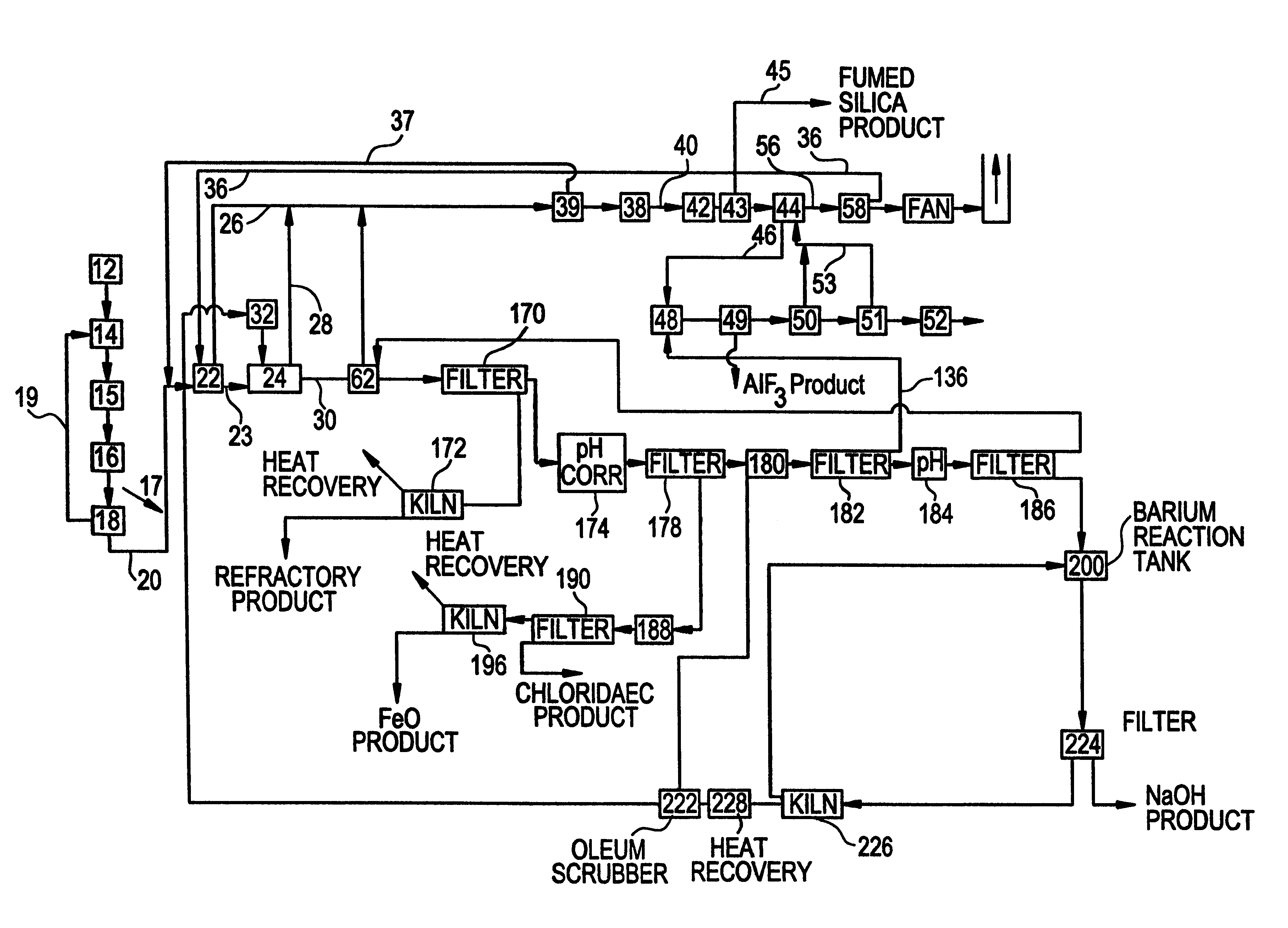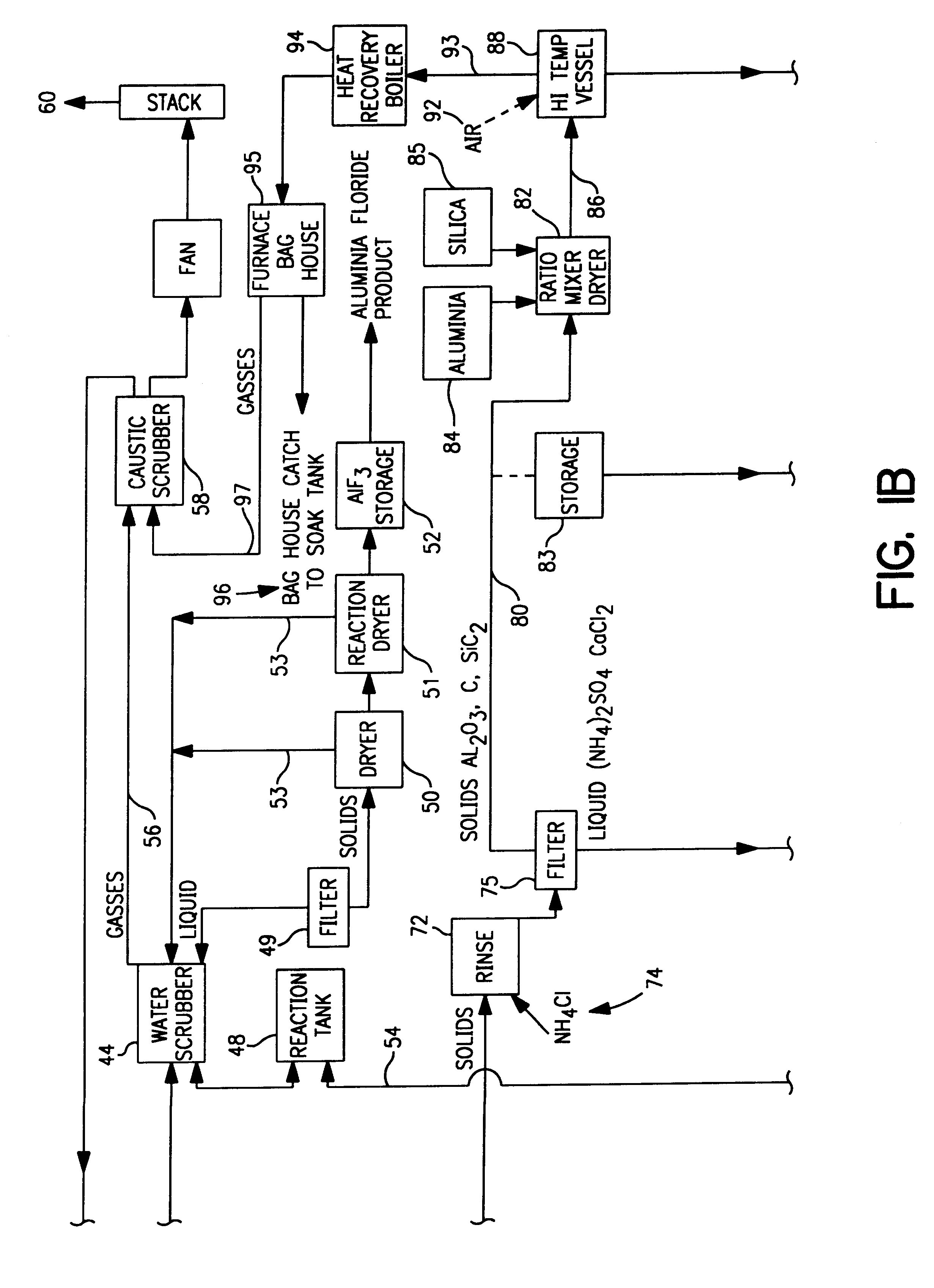Method of recovering fumed silica from spent potliner
a technology of fumed silica and potliner, which is applied in the direction of solid waste management, hydrogen fluoride, dissolving, etc., can solve the problems of spl presenting a significant environmental hazard, a large volume of waste material, and deterioration and eventual failure of the utility of aluminum cells as cathodes
- Summary
- Abstract
- Description
- Claims
- Application Information
AI Technical Summary
Benefits of technology
Problems solved by technology
Method used
Image
Examples
Embodiment Construction
Sixty tons per day of SPL feed, including caked materials and sweepings, is continuously introduced to the crusher 14 and is processed through the steps of the process 10 as described above. Utilizing this process, the 60 tons / day SPL input 12 yields approximately 13 tons / day aluminum fluoride end product, approximately 10 tons / day of a refractory material, 6 tons fumed silica and approximately 50 tons / day of reusable salts, e.g., sodium sulfate, for a total of about 79 tons of recycled solid materials, with the balance of the starling materials being converted to harmless gases and salts. In processing this 60 tons / day of SPL input 12, substantially all of the cyanides contained therein are destroyed, and substantially all of the fluorides are converted to aluminum fluoride as a useful end product. Thus, these highly environmentally damaging materials are either eliminated or converted to useful products.
The foregoing exemplary descriptions and the illustrative preferred embodiment...
PUM
| Property | Measurement | Unit |
|---|---|---|
| temperature | aaaaa | aaaaa |
| temperature | aaaaa | aaaaa |
| temperature | aaaaa | aaaaa |
Abstract
Description
Claims
Application Information
 Login to View More
Login to View More - R&D
- Intellectual Property
- Life Sciences
- Materials
- Tech Scout
- Unparalleled Data Quality
- Higher Quality Content
- 60% Fewer Hallucinations
Browse by: Latest US Patents, China's latest patents, Technical Efficacy Thesaurus, Application Domain, Technology Topic, Popular Technical Reports.
© 2025 PatSnap. All rights reserved.Legal|Privacy policy|Modern Slavery Act Transparency Statement|Sitemap|About US| Contact US: help@patsnap.com



